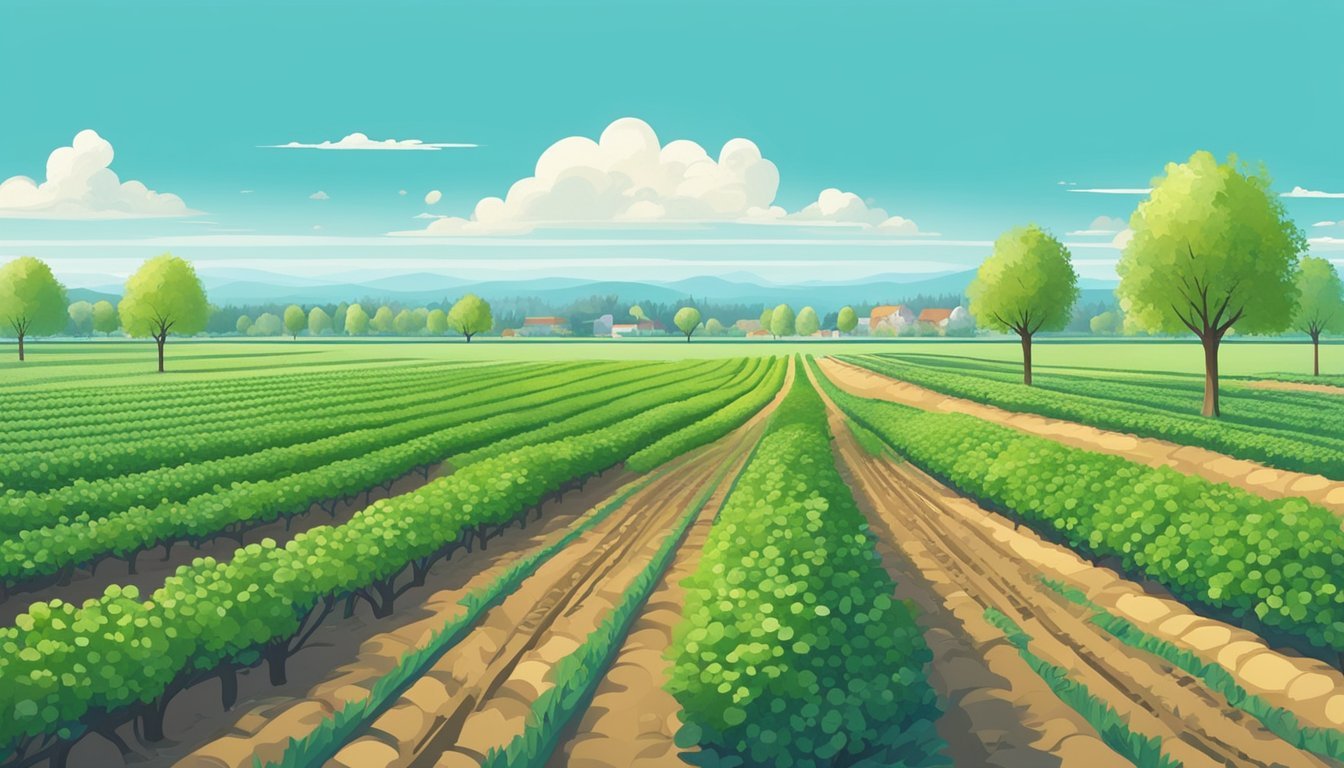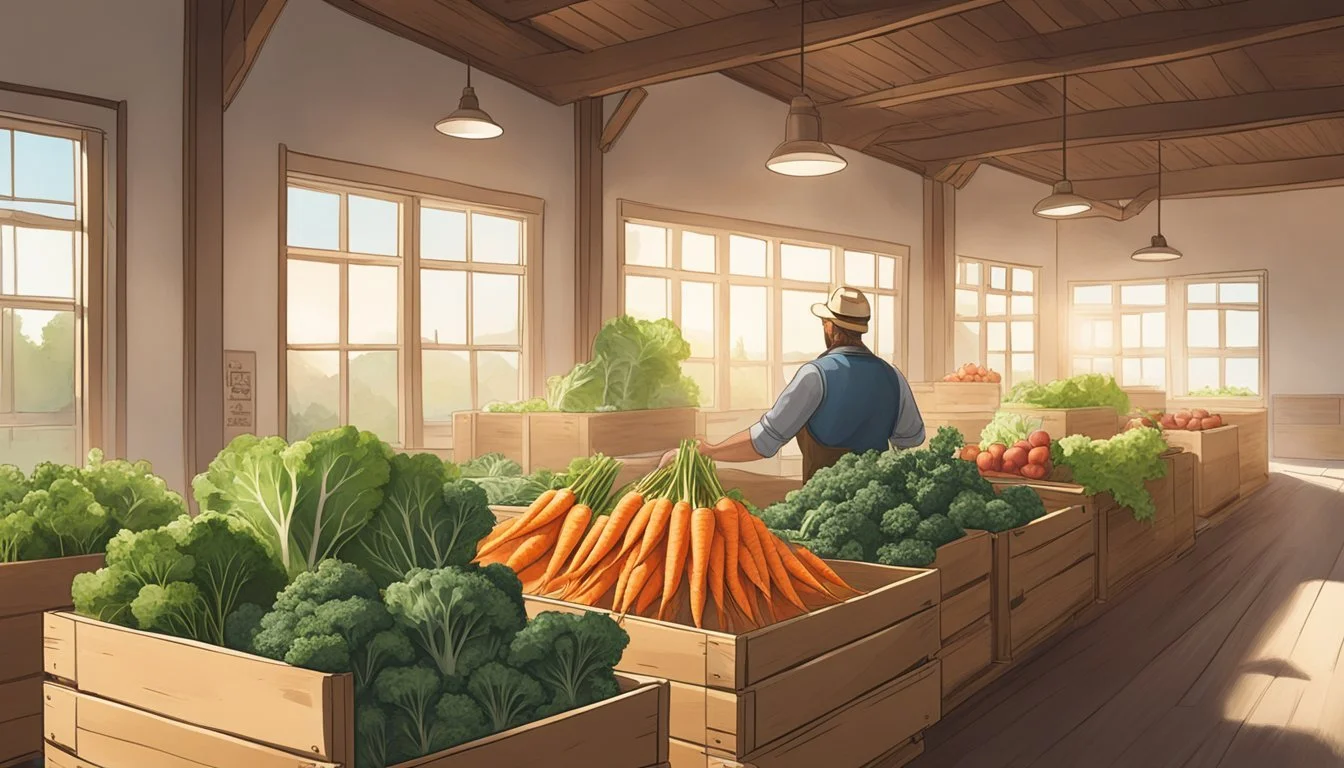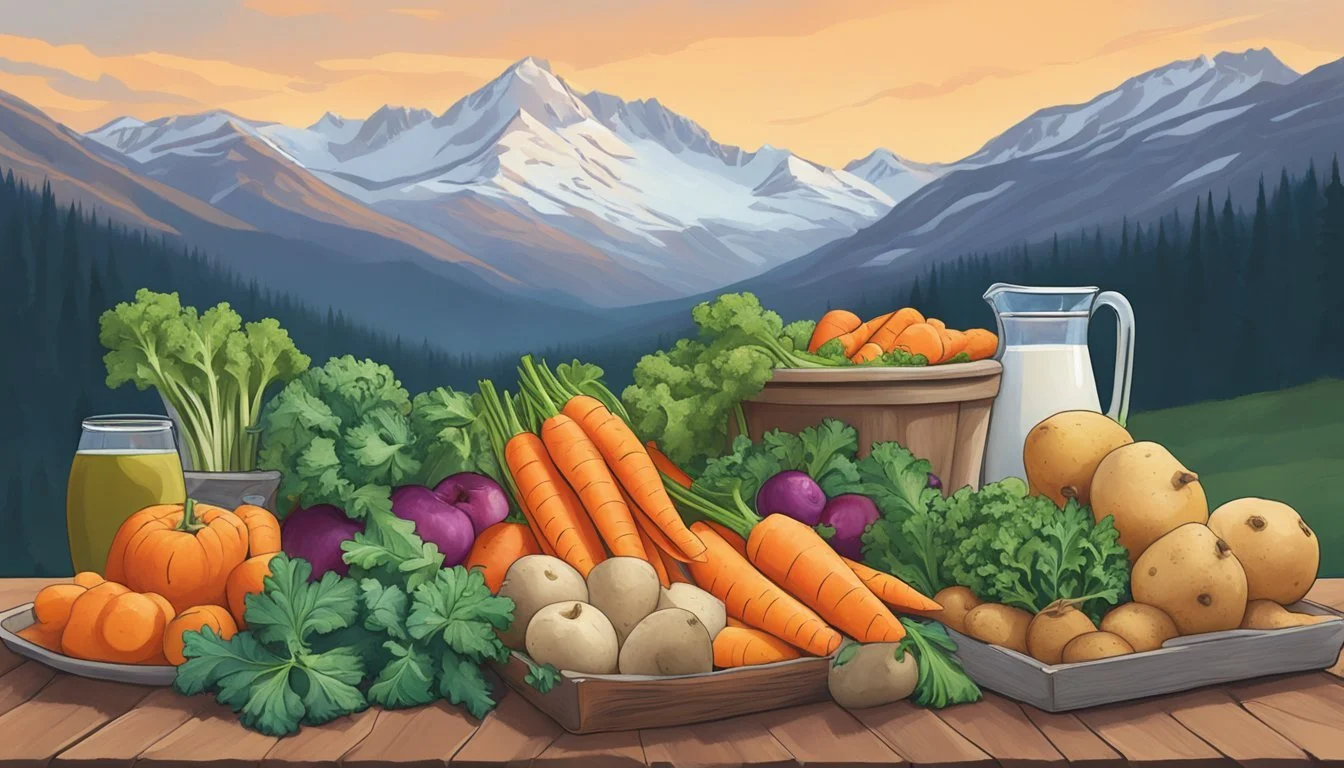Montana Seasonal Fruit & Vegetables in March
Your Guide to Local Produce
This Article is Part of our Montana Seasonal Fruit & Veg Calendar
Montana's climate, characterized by a later harvest and a shorter growing season, significantly influences the availability of fruits and vegetables throughout the year. March in Montana is still a cold month, and as such, the selection of fresh produce is tilted towards cool-weather crops and those that store well over winter. The residents often rely on root vegetables, such as beets, carrots (how long do carrots last?), and potatoes, which are harvested in the late summer or early fall and can be stored for use throughout the winter months.
Despite the challenging cold, farmers and gardeners in Montana make the most of the state's agricultural cycle. March offers a range of stored produce alongside a variety of greenhouse-grown vegetables, such as leafy greens. This is a testament to the ingenuity of local agriculture which extends the availability of some types of fresh produce. Seasonal eating during this month means embracing the hearty and robust flavors of winter's bounty while anticipating the first hints of spring's forthcoming fresh options.
Local markets and farm stands may also begin to introduce early spring crops like spinach and chard if the conditions allow, these being among the first greens to emerge as the Montana landscape slowly warms. While fruits are generally scarce in fresh form during this time, apples and pears from the previous season’s harvest may still be available, having been kept in cold storage to maintain their quality. Consumers seeking to support Montana's local agriculture can look forward to these offerings, knowing they are eating seasonally and sustainably.
Seasonal Overview In Montana
Montana's growing season navigates the delicate balance of a northern climate, presenting a unique array of fresh produce that shifts with the changing months. March, a transitional period between the cold embrace of winter and the gentle thaw of spring, offers a glimpse into the state's agricultural resilience and diversity.
Understanding Seasonality
Seasonality in Montana's agriculture is dictated primarily by its climate. The state experiences four distinct seasons, with winter typically extending into March. This means that much of the fresh produce available is either stored from the fall harvest or grown in controlled environments like greenhouses. Root vegetables and hearty winter squashes tend to dominate the selection, providing a robust variety that can withstand the colder temperatures.
March's Unique Position
March stands at the crossroads of winter and spring in Montana. It is a month where the last of the winter produce and the first signs of spring's offerings intermingle. Consumers may find that storage crops such as potatoes, onions, and carrots are still widely available, while early spring greens like spinach and kale (What wine goes well with kale?) may begin to make an appearance, weather permitting.
Montana's Climate and Agriculture
Montana's climate plays a significant role in its agricultural output. Given its northern location, the growing season is shorter, and farmers often rely on cool-weather crops. The state's elevation and topography also result in regional microclimates which can affect local growing conditions. This means that agriculture in Montana is a testament to both adaptation and innovation, ensuring a year-round supply of produce within the limitations set by nature.
Fruits and Vegetables in March
March in Montana signals the end of winter and the tentative beginning of spring. This month sees the last of the winter produce and the first hints of spring's bounty, offering a unique blend of produce that can enhance the local diet.
Fresh Picks for March
Montana's March harvest offers a limited but valuable selection of fruits and vegetables that are ripe and in season. Root vegetables like carrots are still plentiful and sweet, having been stored from fall harvests. Leeks, with their mild onion flavor, are also available and ideal for soups and stews. Cabbage, versatile and hearty, continues to be a staple, adding crunch to salads and providing the base for comforting cooked dishes.
In terms of green vegetables, brussels sprouts (how long do brussels sprouts last?)and celery remain good choices. While not at the peak of their season, these vegetables are still available, likely from storage, and offer healthful options for meals.
Transitioning Crops
March is a transitional month, bridging the gap between winter and spring. Cauliflower, another cold-weather crop, can still be found. However, more delicate vegetables like asparagus (how long does asparagus last?)and greens may start appearing late in the month, weather permitting. These early spring vegetables bring a freshness to the table that is much awaited after the heavier fare of winter.
Asparagus, a perennial favorite, is eagerly anticipated and its arrival is a herald of the new season's produce to come. At the same time, a variety of greens, such as spinach and kale, may begin to be available, signaling the forthcoming abundance of spring.
Preparing Seasonal Produce
Montana's bounty in March offers a versatile range of produce, ideal for refreshing salads and robust meals that bring out the natural flavors of each ingredient.
Salads and Light Dishes
When preparing salads and light dishes, (What wine goes well with light dishes?) chefs can highlight the vibrant taste of fresh March vegetables. Spinach, lettuce, and kale serve as nutritious bases for salads, each contributing a distinctively rich green hue and texture. The slightly peppery taste of spinach, the crunch of lettuce, and the hearty chew of kale create dynamic foundations for a range of salads.
A classic salad can be enhanced with the following produce available in March:
Root Vegetables: Thinly sliced raw parsnips or rutabagas can add a sweet, earthy flavor to salads.
Sweet Vegetables: Roasted beets or carrots introduce a natural sweetness that complements the greens.
Vegetable Preparation Method Suggested Pairing Spinach Raw, in salad Balsamic vinaigrette, walnuts Lettuce Raw, torn for salad Light lemon dressing, fresh herbs (how long do fresh herbs last?) Kale Massaged with dressing Dried cranberries (how long do dried cranberries last?), pine nuts (how long do walnuts last?)
Hearty Meals and Sides
March vegetables are also well-suited for heartier dishes. Broccoli, parsnips, and potatoes can be transformed into comforting sides or even star as main courses.
Hearty sides benefit from simple preparations that maintain the integrity of the flavor:
Broccoli: It can be steamed until just tender and then sautéed in garlic butter for a flavorful yet healthy side dish.
Parsnips: They work well when roasted to bring out their innate sweetness, serving as an excellent complement to savory dishes.
Potatoes: They can be the highlight of a meal, whether roasted with rosemary and garlic or mashed with cream and butter for a classic comfort dish.
For a comforting pasta dish, chefs may consider the following approach:
Roast cubed potatoes, parsnips, and other root vegetables with olive oil, salt, and pepper.
Toss with cooked pasta, a bit of pasta water, and grated Parmesan cheese.
Finish with a sprinkling of fresh herbs like parsley or thyme to balance the hearty flavors.
Nutritional and Flavor Profiles
As March ushers in the early spring in Montana, the available fruits and vegetables offer robust nutritional benefits and vibrant flavors that are a welcome departure from winter's fare.
Benefiting From March's Bounty
March's seasonal produce in Montana is not only fresh but packed with essential nutrients. Vegetables like cabbage and Brussels sprouts come into season. They are high in vitamin K, which supports bone health, and vitamin C, essential for immune function. The arugula (how long does arugula last?) available in March provides antioxidants and is especially rich in folate, contributing to cellular growth and metabolism.
Flavor Pairings and Enhancements
The flavors of March's produce can be significantly enhanced with the right pairings. Herbs such as basil add a peppery, sweet note to salads while complementing the crisp and firm textures of spring greens like arugula. The use of olive oil as a dressing base can bring out the natural flavors of vegetables while providing healthy fats. Garlic, with its pungent, earthy undertones, can transform a simple dish into something with more complexity and depth, creating a more delicious and savory experience.
Sourcing and Sustainability
In March, Montana's local food scene thrives on sustainability and the availability of seasonal produce. As the state transitions from winter to spring, local farms and markets become pivotal in providing fresh, sustainable options for regional consumers.
Local Farms and Markets
Montana's local farms and farmers markets are integral in the state's march towards sustainable food systems. In March, these local sources can offer a wide array of seasonal fruits and vegetables that not only boast superior flavor but also support the state's agricultural economy. By purchasing from local vendors, consumers help reduce environmental impacts, as the food does not require long-distance transportation leading to lower carbon emissions. A list of commonly available items in March might include:
Fruits: Apples (continuing from fall storage)
Vegetables: Carrots, potatoes, and winter squash (from storage)
These local markets are typically stocked with goods from farmers who prioritize sustainability within a set radius, often 75 miles, thereby ensuring that the food's freshness is outstanding and nutrient-rich.
Selection and Storage Tips
When it comes to selecting seasonal produce, the key indicators of quality include ripeness, firmness, and plumpness. For March's offerings:
Apples: Look for fruit that is firm to the touch and free of bruises.
Carrots: Choose carrots that are bright in color and firm.
Potatoes: Select ones that are firm, with minimal eyes and no green tint.
Winter Squash: Opt for squash that feels heavy for its size and has a hard, deep-colored rind.
To maintain the freshness and flavor of Montana's seasonal produce, proper storage is crucial. Apples should be kept cool and away from strong-smelling foods to prevent flavor transfer. Carrots and potatoes are best stored in a cool, dark place to prevent spoilage. Winter squash prefers a cool, well-ventilated area and can last for several months when stored properly. Emphasis on correct storage practices ensures that the sustainable efforts of local producers extend into consumers' homes, promoting a culture of waste reduction and appreciation for local, seasonal offerings.
Beyond March: Seasonal Eating Year-Round
Embracing seasonal eating requires a thoughtful approach to food preservation and planning for the freshest produce throughout the year.
Extending Freshness Through the Seasons
Montana's growers and consumers often extend the availability of fresh produce beyond their natural harvest times. As the seasons change, methods such as canning, freezing, and dehydrating ensure that fruits and vegetables can be enjoyed throughout the year.
Spring typically enjoys an abundance of leafy greens and early vegetables, like radishes and peas. As these begin to wane, summer ushers in a bounty of berries, cherries, and stone fruits. Techniques for extension:
Canning: Berries and cherries can be canned in summer for year-round enjoyment.
Freezing: Stone fruits like peaches may be sliced and frozen in July and August.
Dehydrating: Vegetables like tomatoes are often dehydrated in late summer for preservation.
Anticipating Upcoming Seasons
Seasonal eaters in Montana look ahead to prepare for upcoming produce. By keeping a seasonal calendar, they plan meals and preservation techniques to make the most of each season's offerings.
Summer to Fall Transition:
In July and August, proactive gardeners start seeding fall crops such as broccoli and kale.
Farmers' markets have the freshest vegetables and fruits that can be stored, like root vegetables, which remain hearty into the fall.
Planning ahead ensures a seamless transition as one enjoys the tail end of summer abundance while looking forward to fall's arrivals.






